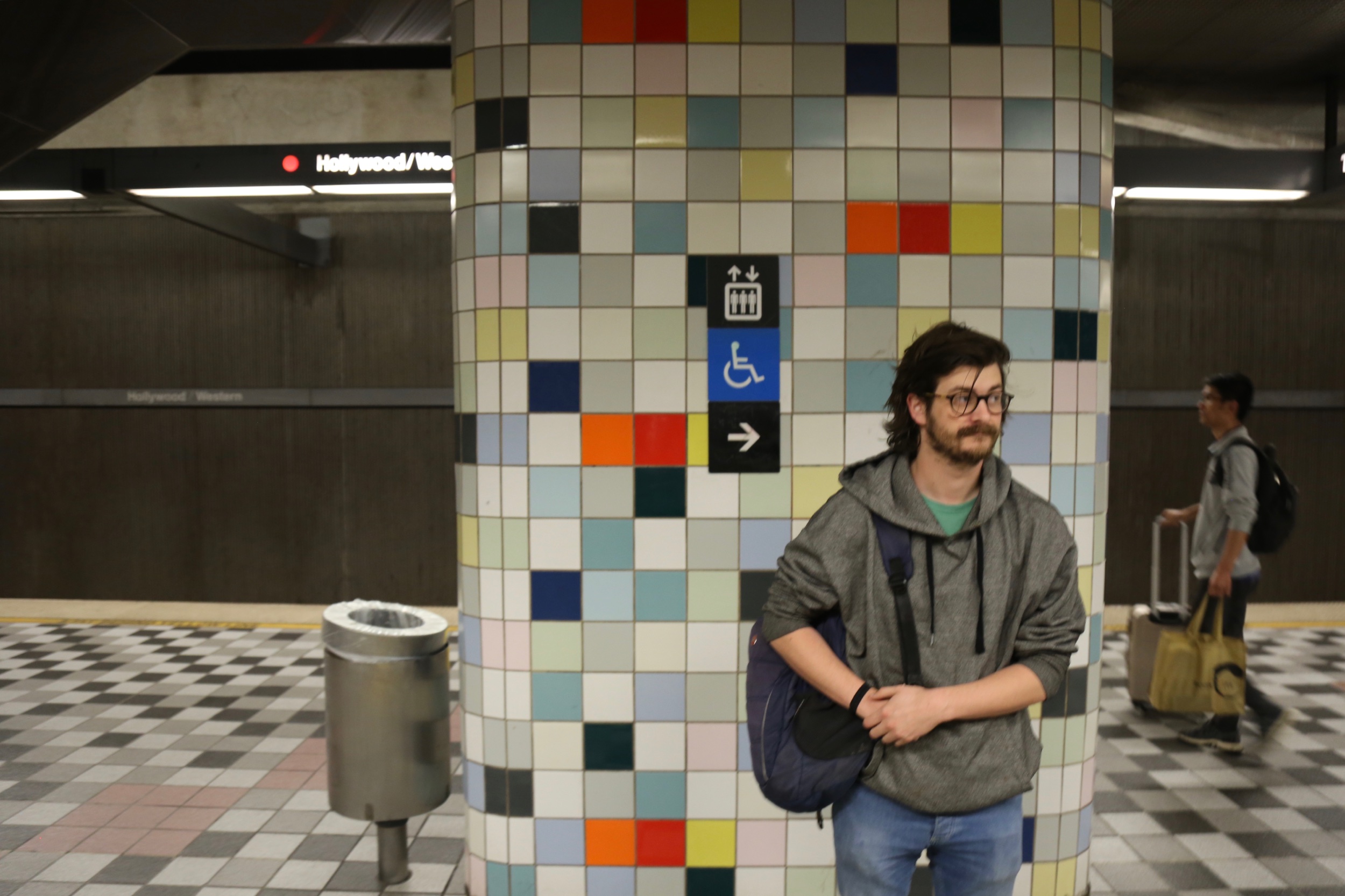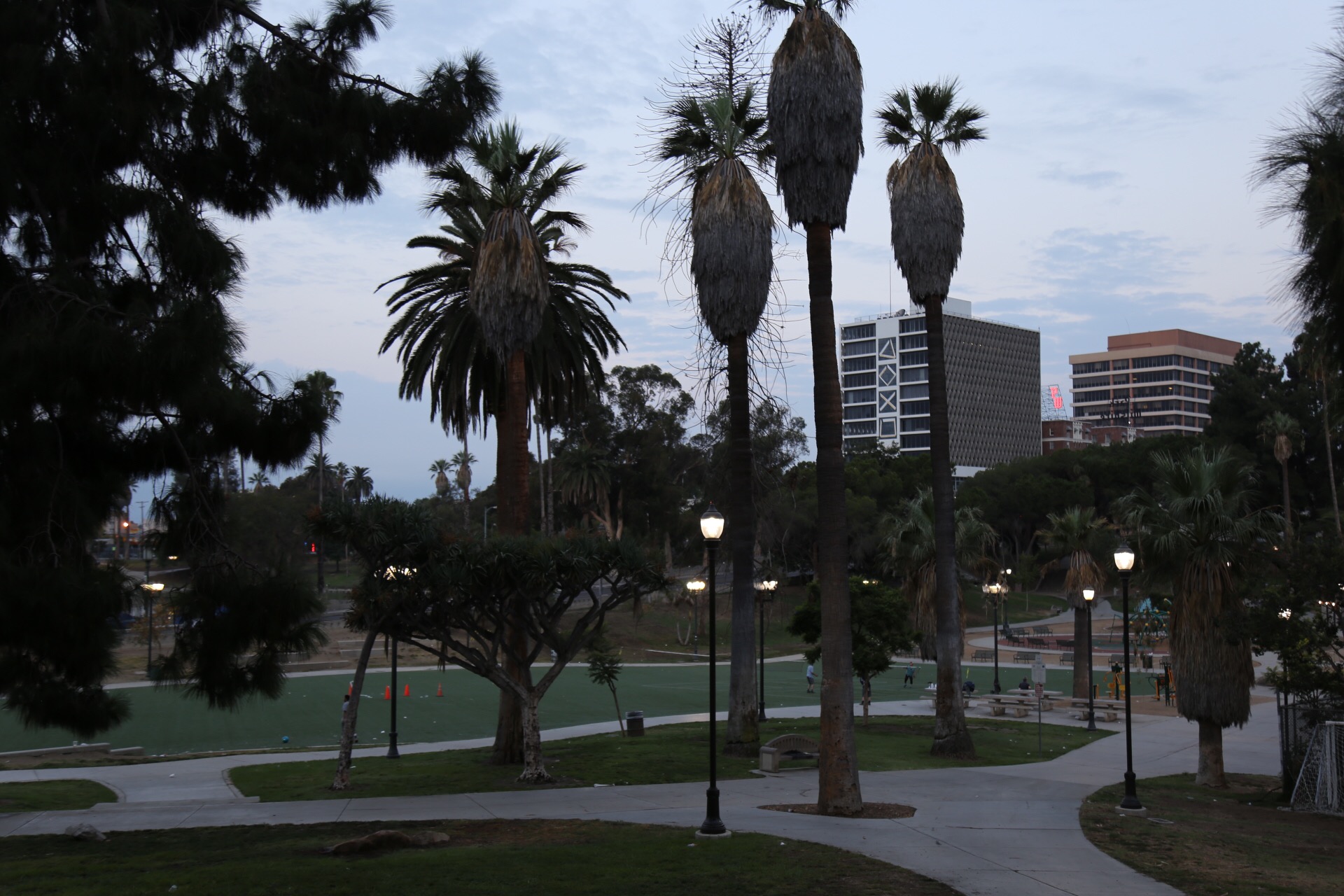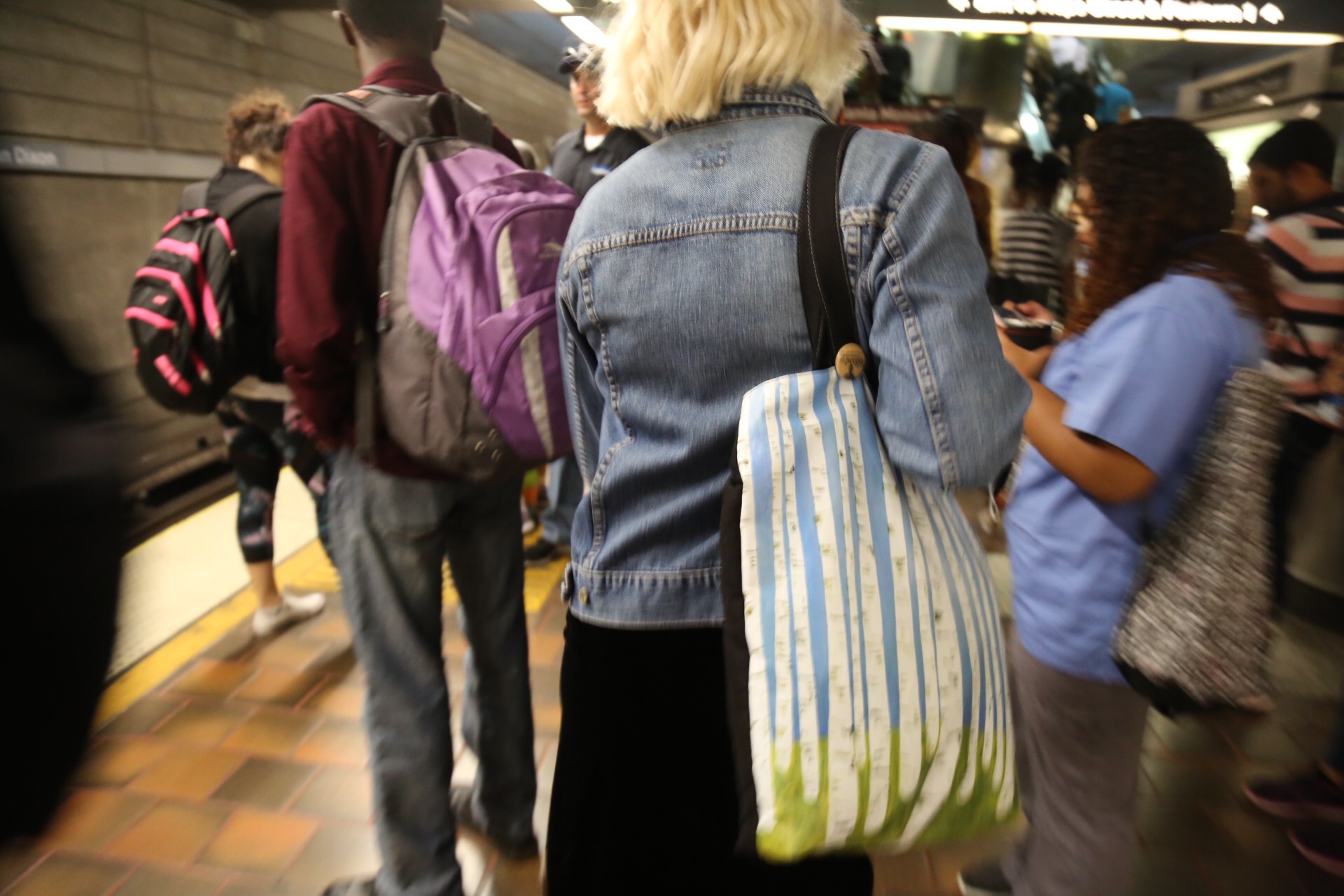It just makes sense.
We’re only about two-hundred feet from Tommy Fleming’s front door, located on a side street off Western Ave., before we see the first of about five homeless tents in our two block walk to Hollywood/Western Station. We are on our way to Tommy’s job as a video editor at the NBC/Universal lot.
Crossing Western Avenue, Tommy says, “When I moved to this neighborhood, I moved all my stuff in and…when I was smoking a cigarette this guy asked me for a cigarette and I said, ‘no.’ The guy punched me in the jaw, and just kept walking,” Tommy is laughing while saying it, reassuring me “…that never happened again. I’ve never really felt unsafe since.” He acknowledges that homelessness has definitely increased in the two years since he has moved there, but adds that “for the most part they’re respectful and I don’t have any issues with it, but it’s just kind of sad.”
This sense of hopelessness around homelessness in Los Angeles is something almost any Angeleno can relate to. Particularly when using the transit system, it tends to seem the epidemic of homelessness is only increasing. Tommy, like a lot of residents who take mass transit, seems to do his best to acknowledge the situation while still moving through his day. It’s a dilemma a lot of people in the city face. The struggle between how much time and effort to give an issue that feels so gigantic and beyond them and, while uncommon in Tommy and my experience, potentially dangerous when factoring in interactions with those facing mental instability or drug usage. It’s important to note that Tommy was hit by a random man, who wasn’t necessarily homeless, but this fear of safety is real for a lot of riders, and whether it is substantiated or inflated by some, it is certainly true that until the city finds a way to make the majority of Angelenos feel safe while taking transit, there won’t be the amount of ridership Metro hopes to obtain.
We just miss the northbound Red Line train so, while waiting ten minutes for the next one, I ask Tommy if he has to take public transit to work or whether driving is an option. “There’s parking at work and at my house, but I was in a pretty bad car accident around three or four years ago…totaled my car…the guy was drunk and didn’t have any insurance. It was a total loss on my part, and left me slightly traumatized. I just thought after that I didn’t want to deal with driving for a while, and…yeah I just didn’t go back. I’ll drive still if someone needs me to, but my general stress level is lower when I’m not driving.” Unlike when Tommy was smiling and telling about his cigarette altercation, this experience is being relayed to me in much more serious tone. Bad things can happen on transit or in a private vehicle, unfortunately bad luck is part of living in a city of millions, however the close access of the Red Line allows Tommy to pick his poison, and for him that includes not being behind the wheel.
While waiting he adds, “My boss takes the Metro to work from Studio City, but I would say most people will ask me ‘Do you take the Metro?”’and when I say, ‘yeah,’ they respond, ‘“WOW!”’ Which I think Is ridiculous because it would be such a hassle to drive in comparison to this.” As he finishes the thought the train is arriving, on time.
We get on and I ask him if it bothers him that while the Red Line has cell service from Union Station to Sunset/Vermont, cell service is not yet available from Hollywood/Western onward, “Truthfully I don’t mind it that much, I’m on my phone so much the rest of the day. There is an argument that it’s good for safety, but I just bring a book or download the songs I want to listen to.” Also the whole train ride lasts nine minutes so there isn’t too much time to account for.
While getting off the train, Tommy mentions how he wished Metro was better at advertising it’s convenience, but he finds, and I agree, that it can sometimes be a hard system to figure out how to use. So much of what we feel about a mode of transportation is which aspect we focus on. By making the experience easier to understand, it could allow people to remember the convenience of a nine minute train ride, rather than the headache-inducing ten minutes of finding out which train is going where. Yet, Tommy says, that pales in comparison to the one thing he hates most about driving: parking. “A drive that only takes six minutes turns into fifteen minutes spent parking!” he says, which in Los Angeles can often be an optimistic prediction if one is street-parking or in one of those ten floor parking garages.
Instead, we exit the station with a large number of tourists on their way to Universal Studios. They take the pedestrian bridge to the park, and Tommy and I cross the street to the studio entrance where I leave him. A twenty-eight minute commute, and that includes missing the train and waiting ten minutes. It just makes sense.
































